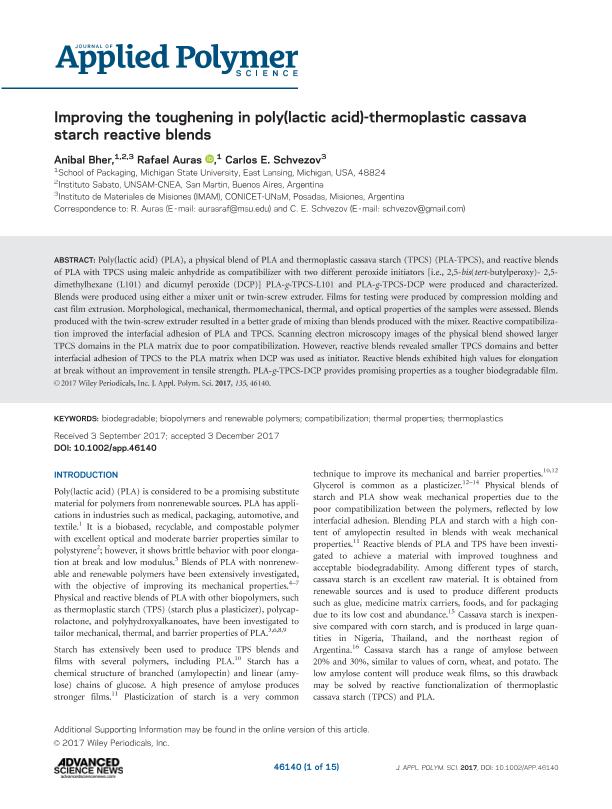Artículo
Improving the toughening in poly(lactic acid)-thermoplastic cassava starch reactive blends
Fecha de publicación:
04/2018
Editorial:
John Wiley & Sons Inc
Revista:
Journal of Applied Polymer Science
ISSN:
0021-8995
e-ISSN:
0021-8995
Idioma:
Inglés
Tipo de recurso:
Artículo publicado
Clasificación temática:
Resumen
Poly(lactic acid) (PLA), a physical blend of PLA and thermoplastic cassava starch (TPCS) (PLA-TPCS), and reactive blends of PLA with TPCS using maleic anhydride as compatibilizer with two different peroxide initiators [i.e., 2,5-bis(tert-butylperoxy)-2,5-dimethylhexane (L101) and dicumyl peroxide (DCP)] PLA-g-TPCS-L101 and PLA-g-TPCS-DCP were produced and characterized. Blends were produced using either a mixer unit or twin-screw extruder. Films for testing were produced by compression molding and cast film extrusion. Morphological, mechanical, thermomechanical, thermal, and optical properties of the samples were assessed. Blends produced with the twin-screw extruder resulted in a better grade of mixing than blends produced with the mixer. Reactive compatibilization improved the interfacial adhesion of PLA and TPCS. Scanning electron microscopy images of the physical blend showed larger TPCS domains in the PLA matrix due to poor compatibilization. However, reactive blends revealed smaller TPCS domains and better interfacial adhesion of TPCS to the PLA matrix when DCP was used as initiator. Reactive blends exhibited high values for elongation at break without an improvement in tensile strength. PLA-g-TPCS-DCP provides promising properties as a tougher biodegradable film.
Archivos asociados
Licencia
Identificadores
Colecciones
Articulos(IMAM)
Articulos de INST.DE MATERIALES DE MISIONES
Articulos de INST.DE MATERIALES DE MISIONES
Citación
Bher, Anibal Ricardo; Auras, Rafael; Schvezov, Carlos Enrique; Improving the toughening in poly(lactic acid)-thermoplastic cassava starch reactive blends; John Wiley & Sons Inc; Journal of Applied Polymer Science; 135; 15; 4-2018; 1-15
Compartir
Altmétricas




